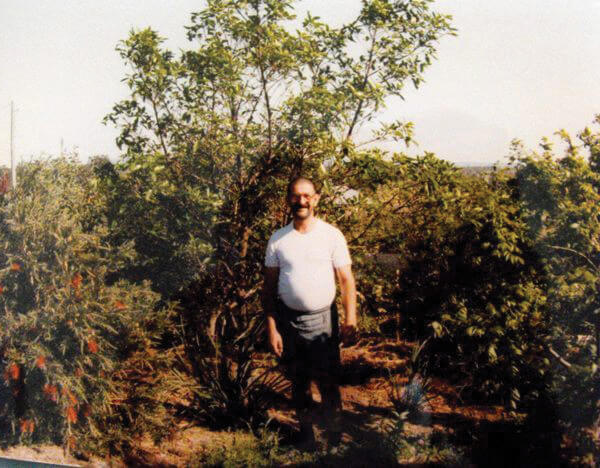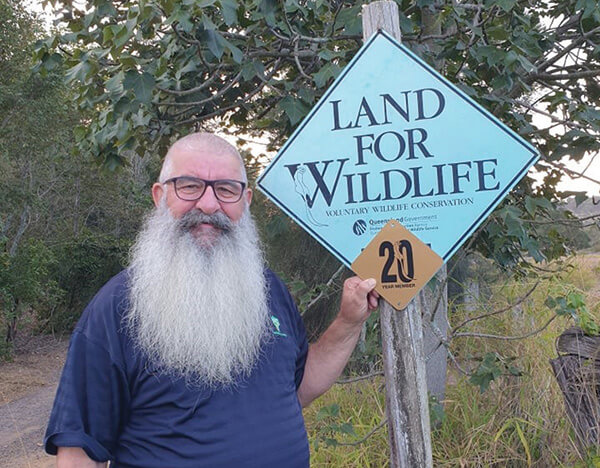When we bought our 20 acre property back in 1990, it was all bare paddocks. We moved here because we wanted somewhere with heavy soils with good grass for horses as my wife keeps miniature horses.
Our property was previously used as a dairy farm and the nearby lowland country around Marburg used to grow sugar cane. Those days are long gone. The good soils have all been overgrazed and over cultivated. I remember trucks and trucks carrying milk from all the local dairies. That kind of land use simply can’t be maintained on these soils anymore.
In the 180 years since European colonisation of this area, the country has been transformed. It used to be cool, fertile plains with scattered dry rainforest scrubs. Now, it is dry infertile soils. Most of the area was dense Brigalow (Acacia harpophylla) and Belah (Casuarina cristata) forests with fertile floodplains growing huge Blue Gums (Eucalyptus tereticornis) and Black Tea-trees (Melaleuca bracteata). The occasional big Blue Gum has been left and can be seen along Plain and Woolshed Creek floodplains.
I started planting out the front of the property in 1996 with native plants to attract birds. Over time, my plantings have expanded and developed into a shelterbelt corridor that runs from my place up to the nearby Minden Range. This corridor has enabled the Mountain Brushtail Possums (bobucks) to move down the range to my place.
As I learnt more about the region’s history, I planted more scrub species to try to recreate the ecosystems that were once here. Many of the scrub species I planted died because the soil and surrounding microclimate had dried out so much since European colonisation; they simply could not survive here anymore. The area out the front of my place was covered in horse manure, and this is the area that now has a wonderful dry rainforest. It is the only area on my property where scrub species can grow.
There are two dams on our property. Both are spring fed and are a bit brackish, but they are great for livestock, ducks and turtles.
We joined Land for Wildlife in 2000 as Working Towards Registration status. About four years later, we were upgraded to Registered as a result of all the plantings I had done.


In the mid-2000s I started to work for Gatton and Esk councils and am now working with Lockyer Valley Regional Council as Environment Officer. I have also worked for Scenic Rim Regional Council. In these roles I have had the privilege to visit hundreds of Land for Wildlife properties. Land for Wildlife is a thing that puts a smile on my face. I have never had to sell the program to anyone – they all come freely to the program with good environmental intentions. Landholders everywhere want to learn about their property and nature. Lots of legislation seems stacked against the environment, so it is good to work with a program that puts the environment and landholders first.
From my 30+ years of planting native plants, I have learnt that you need to put the right plant in the right spot. During the recent drought we had several 45°C days. Many of the Silky Oaks (Grevillea robusta) and Maiden’s Wattle (Acacia maidenii) died, but now they are making fallen timber which is habitat for invertebrates, small reptiles and birds. It is a living forest. I am waiting for some of the threatened plants that I planted to flower and fruit. I don’t know how old I will be when that happens!
One of the most exciting projects on my property has been the creation of an ephemeral wetland that would have once been there. I used fill from one of my dams to build a low wall around an old swampy area. Then I planted Swamp Tea-tree (Melaleuca irbyana), Black Tea-tree and Belah – similar species to what would have been around the Prenzlau Swamp area. The native grasses and native wetland plants like Ludwigia and Juncus just appeared. They came naturally and thought “this is the right spot”. Frogs, yabbies, rails, egrets and herons call this area home when the soil is wet, soft and green.
I know I must be doing something right because when we first moved here, I recorded 15 bird species. Now I have 102 species on my bird list. All the plants I’ve planted provide a home for some wildlife.
Article by Martin Bennett
Land for Wildlife member
Prenzlau, Somerset
